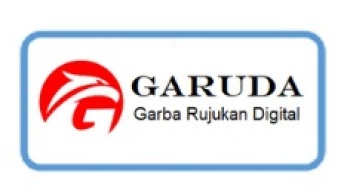SUMEDANG UMBUL DANCE: PASEH STYLE AND SITURAJA STYLE
Abstract
The umbul dance in Sumedang was born as a traditional art that embodies the local culture of the local community. During its development process, the umbul dance experienced ups and downs caused by several factors, so that these factors resulted in changes that occurred in the Paseh and Situraja style umbul dances. This study aims to describe the structure of choreography, costume makeup, and function in the Sumedang umbul dance: Paseh Style and Situraja Style. The scientific study used in this study is ethnochoreology. The ethnochoreology study in this study is used as a theoretical umbrella based on the results sought, namely the structure of choreography, costume makeup and function in the Paseh and Situraja style umbul dances. The method used is a Qualitative method with a descriptive analysis approach. Data collection techniques used by researchers are observation, interviews, literature studies, and documentation. The results of this study found thatUmbul dance in Sumedang has several versions, namely Paseh style and Situraja style. Growing and being born in two different areas caused both to experience a development process and have similarities and differences in choreography structure, costume make-up, and function.
Keywords
Full Text:
PDFReferences
Amalia Ramadhani, Narawati, T., & Dyan, PL (2023). Spiritual Values in the Choreography of the Setiakh Dance in the White Blood Kingdom. Ringkang: Journal of Dance Arts and Dance Arts Education, 3(2), 245–253.
Azman, M., Badaruddin, S., & Suariyoko. (2023). Makeup and Bridal Wear in Lubuklinggau City. Cv. Litera Kata.
Badaruddin, S. (2022). SILAMPARI An Identity and Self-identity.
Badaruddin, S., & Masunah, J. (2019). The Style of Silampari Dance of Lubuklinggau as a Greeting Dance in South Sumatera Indonesia. 255, 65–69. https://doi.org/10.2991/icade-18.2019.14
Caturwati, E. (1994). SUNDANCAN DANCE COSTUME MAKEUP. ASTI.
Corson, R. (1981). Stage Makeup (sixth).
Dinda Damayanti Sudrajat, TNAIS (2021). Almadad Ing Banten Dance at the Rajawali Studio, Pandeglang Regency. Dance Arts and Dance Education, 1(3), 34–43.
Djokaho, M., Nai, F.A., Robot, M., & Nico, H.G. (2021). Ethnochoreological Study of the Ja'I Di Dance
Guru Sina Traditional Village, Ngada Regency. Optimism Journal, 2(2), 37–44.
I Ketut Darsana. (2007). Traditional Balinese Aga Costumes of Tenganan Pagringsingan Village and Asak Karangasem Village. Mudra Journal of Arts and Culture, 21(2). https://doi.org/10.31091/mudra.v21i2.1522
Kaeksi, MH, Fitriasari, RPD, & Sushartami, W. (2020). Transformation of Warak Ngendhog into Warak Dhugdher Dance in the City of Semarang. Journal of Dance Arts, 9(1), 1–10.
Kurnia, M. (2016). Malay Traditional Dance: Existence and Revitalization of Art. Puspantara.
Nana, D., & Elin, H. (2018). Choosing the Right Research Method: For Management Science Research. Journal of Management Science, 5(1), 288.
Narawati, T. (2013). Ethnochoreology: Study of ethnic dance & its use in arts education. International Conference on Languages and Arts, 70–74.
Narawati, T. (2020a). Ethnochoreology Theory and Practice in Education. Youth Publishing and Printing Unit.
Narawati, T. (2020b). ETHNOCHOREOLOGY Theory and Practice in Education. Youth Publishing and Printing Unit.
Nugraha, A., Nugraheni, T., & Suryawan, AI (2021). Campak Dance at the Dharma Habangka Studio, Ringkang Regency, 1(1), 32.
Pratiwi, A. (2018). Buncis Golek Gendong Dance Performance in Karangsari Village, Kebasen District, Banyumas Regency.
Sedyawati. (1986). Elementary Knowledge of Dance and Several Dance Problems. Directorate of Arts, Jakarta Arts Development Project.
Sma, DI, & Banda, N. (2024). Study of the Saka farmer dance choreography at the Kelapa Gading studio at State Senior High School 7, Banda Aceh. 9, 28–36.
Soedarsono, D. (1986a). Elementary Knowledge of Dance and Several Dance Problems. Directorate of Arts, Jakarta Arts Development Project.
Soedarsono, D. (1986b). Elementary Knowledge of Dance and Several Dance Problems. Directorate of Arts, Jakarta Arts Development Project.
Sugiyono. (2016). Educational Research Methods. CV. Alfabeta.
Syefriani, K. (2022). The Existence of Offering Dance in the Seri Melayu Art Collection During the Covid-19 Pandemic.
Umbul Dance - Cultural Heritage of the Ministry of Education and Culture. (2018). Directorate of Cultural Heritage and Diplomacy.
Wahyudi, AV, Narawati, T., & Nugraheni, T. (2018). Instilling Sundanese Values Based on Pakujajar Dance Learning at SMP Negeri 5 Sukabumi. Panggung, 28(2). https://doi.org/10.26742/panggung.v28i2.462
Yuliawan Kasmahidayat, Ria Sabaria, Saian Badaruddin, Fitri Kurniati, & Agus Sudirman. (2024). Spiritual Self-Defense Practices in the “Bendung” Silat Start for Learners at the Mahaputra Pencak Silat Padepokan. EVOLUTIONARY STUDIES IN IMAGINATIVE CULTURE, 168–176. https://doi.org/10.70082/esiculture.vi.679
DOI: https://doi.org/10.17509/jddes.v4i2.75714
Refbacks
- There are currently no refbacks.
Copyright (c) 2024 Universitas Pendidikan Indonesia

This work is licensed under a Creative Commons Attribution-ShareAlike 4.0 International License.
E-ISSN 2776-5326 | P-ISSN 2797-8990
Address:
Program Studi Pendidikan Seni Tari, Fakultas Pendidikan Seni Dan Desain, Universitas Pendidikan Indonesia. Gedung FPSD - Jl. Dr. Setiabudi No.229, Isola, Kec. Sukasari, Kota Bandung, Jawa Barat 40154, Bandung, Provinsi Jawa Barat. (022)200-9198.
JDDES is licensed under a Creative Commons Attribution-ShareAlike 4.0 International License













